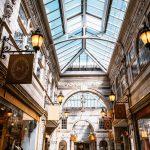Historical Foundations of UK Women’s Fashion
Exploring the historical UK fashion landscape reveals distinct periods that shaped women’s style profoundly. The Victorian fashion trends (1837-1901) emphasized structured silhouettes featuring tightly corseted waists, voluminous skirts supported by crinolines, and intricate detailing such as lace and embroidery. These elements highlighted an ideal of femininity grounded in modesty and formality.
Transitioning into the Edwardian era style (early 20th century), the silhouette evolved into a more fluid and natural line, known as the S-bend corset shape. This period saw the emergence of lighter fabrics and less rigid constructions while retaining elegance, with high collars and long sleeves continuing as prominent features.
Also read : What are the best color palettes for UK women’s fashion in 2024?
The early 20th century fashion further diversified into styles influenced by social changes, including the incorporation of simpler designs reflecting women’s increasing public roles. Despite evolving, many elements like tailored coats, delicate embellishments, and muted color palettes have carried into contemporary wardrobes.
Enduring elements from these historic periods remain visible today. Modern high-street and luxury garments echo Victorian structure through fitted bodices, while Edwardian intricacies inspire lacework and femininity in dresses. Understanding these foundations enriches appreciation of how traditional aesthetics continue to inform and invigorate current UK womenswear.
Topic to read : What Trends in UK Women’s Fashion Are Dominating the Catwalks This Season?
Influences of Historical Trends on Modern Fashion
The influence of historical fashion on modern UK fashion is evident through the recurring presence of vintage elements in contemporary wardrobes. Designers frequently draw inspiration from Victorian fashion trends and Edwardian era style, adapting their hallmark silhouettes and detailing to suit today’s tastes. For example, the structured bodices and delicate lacework prevalent in Victorian times are reimagined in modern dresses and blouses, demonstrating a tangible link between past and present aesthetics.
Cyclical trends explain how styles from the early 20th century fashion frequently resurface in the modern scene. The concept of the “vintage revival” involves designers and consumers embracing retro fabrics, patterns, and shapes, renewing interest in timeless designs. This cycling is not merely nostalgic; it reflects a desire for craftsmanship and elegance often associated with earlier eras. High-street collections often feature softer, flowing lines reminiscent of Edwardian elegance, while luxury brands might emphasize intricate embroidery rooted in historical techniques.
Visually, the comparison between past and current fashion reveals a blend of old and new. Modern UK fashion retains key historical elements such as high collars, corseted waists, or long sleeves but integrates them with practical fabrics and contemporary cuts. This fusion respects tradition while meeting today’s functional demands. Wearing such pieces allows individuals to connect with UK fashion heritage and celebrate the enduring influence of historic styles on contemporary British style.
Designers and Collections Inspired by British Heritage
British fashion designers have long drawn from the rich tapestry of historical UK fashion, incorporating elements from the Victorian fashion trends, Edwardian era style, and early 20th century fashion into their creations. This practice roots their work firmly in tradition while appealing to contemporary sensibilities.
Many renowned fashion houses UK showcase heritage collections that highlight iconic silhouettes and motifs from the past. For example, designers have often revived the structured bodices, delicate lace, and intricate embroidery reminiscent of Victorian gowns, translating these into modern garments that balance historical detail with wearability. Similarly, Edwardian influences appear in flowing fabrics and high-necked collars, refreshed through new cuts and materials. Runway inspirations frequently feature these styles to evoke a sense of timeless British elegance and craftsmanship.
Specific garments such as corseted dresses, tailored coats with vintage embellishments, or lace-trimmed blouses serve as direct references to historical UK fashion periods. By reimagining these pieces, designers create collections that resonate with both heritage appreciation and current fashion trends. This blending of eras not only celebrates the UK’s sartorial history but also ensures its ongoing influence within the global fashion scene.
Expert Opinions and Cultural Analysis
Fashion historians UK often emphasize that the resurgence of historical UK fashion in modern wardrobes reflects deeper cultural currents. Expert commentary highlights that society’s renewed interest in vintage styles, particularly Victorian fashion trends, Edwardian era style, and early 20th century fashion, stems from a desire to reconnect with craftsmanship and heritage amid fast-paced consumerism.
The analysis of style evolution reveals how cultural trends in fashion are intertwined with social identity and historical consciousness. For instance, the emergence of more fluid silhouettes during the Edwardian era mirrored shifting gender roles, a dynamic echoed today as designers blend traditional elements with contemporary values to appeal to modern women’s needs. This blend underscores a cultural narrative where old and new coexist, enriching the storytelling power of fashion.
Experts also note that cyclical revivals are influenced by nostalgia and a societal quest for authenticity. The enduring appeal of structured bodices or lace detailing connects wearers with a lineage of British style, showcasing fashion’s role as a cultural artifact. Such insights from fashion historians UK provide a framework to understand why historical fashion influence remains a potent force shaping both design and consumer choices in the UK today.
Historical Foundations of UK Women’s Fashion
The historical UK fashion landscape is marked by several key periods, each contributing distinctive styles that continue to influence women’s wardrobes today. The Victorian fashion trends (1837-1901) are characterized by highly structured silhouettes with tightly cinched waists, often achieved through corsetry, and expansive skirts supported by crinolines or bustles. Embroidery, lace, and intricate detailing emphasized modesty and femininity, creating a silhouette that was both formal and ornamental.
Moving into the Edwardian era style (early 20th century), there was a notable shift toward more natural and flowing lines. The popular S-bend corset redefined the waistline, pushing the chest forward and hips back, contributing to a soft yet elegant shape. High collars and long sleeves remained signature features, but fabrics became lighter and designs less rigid, reflecting subtle social changes.
By the early 20th century fashion period, styles began to embrace simplicity and practicality in response to evolving gender roles and social dynamics. Women’s increasing public participation influenced the adoption of less cumbersome garments, incorporating tailored coats and understated embellishments. These elements balanced the preservation of elegance with growing needs for comfort and mobility.
Significantly, many features from these historic eras remain embedded in modern UK womenswear. The Victorian focus on fitted bodices and detailed lacework is visible in contemporary dresses, maintaining a connection to legacy craftsmanship. Likewise, Edwardian influences persist through the use of flowing fabrics and period-inspired collars, adapted to current styles. This enduring presence of historical UK fashion not only enriches modern design but also affirms the cultural importance of these foundational periods.










